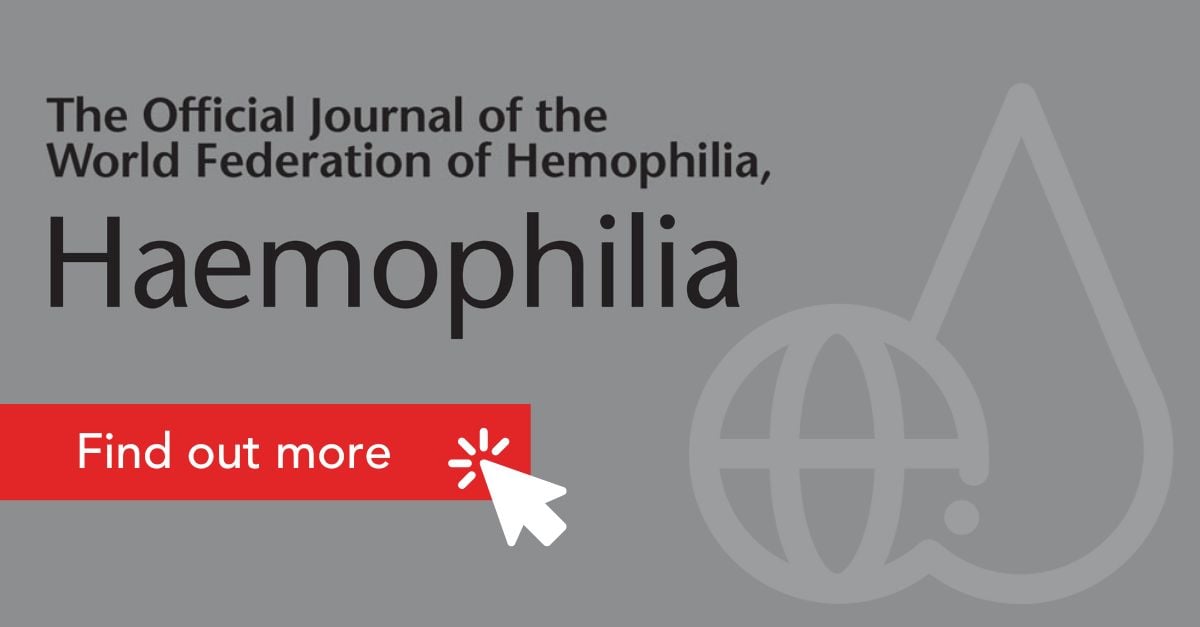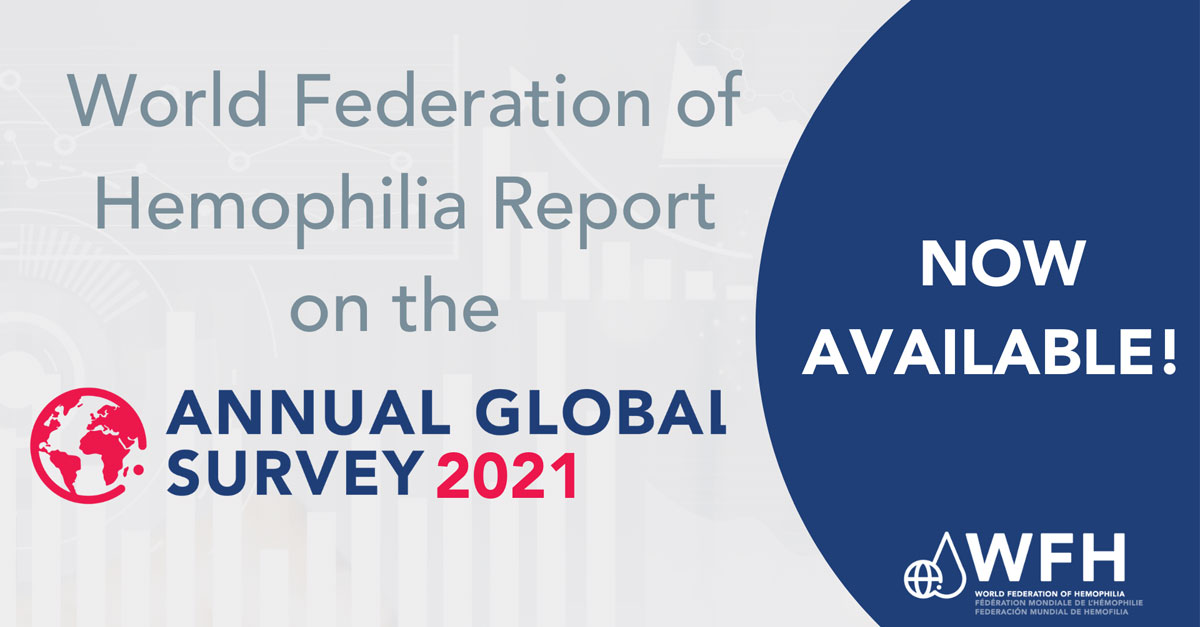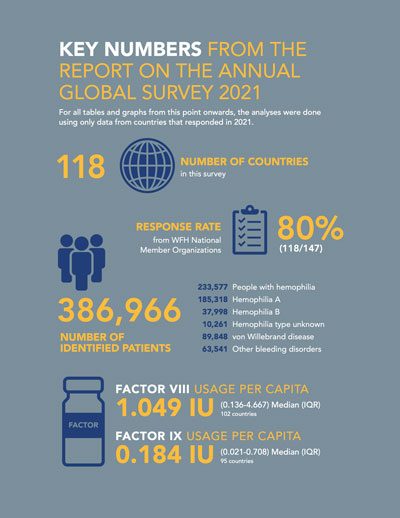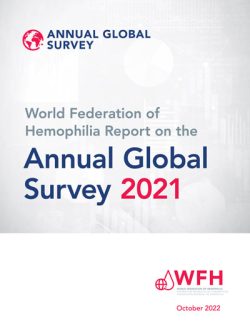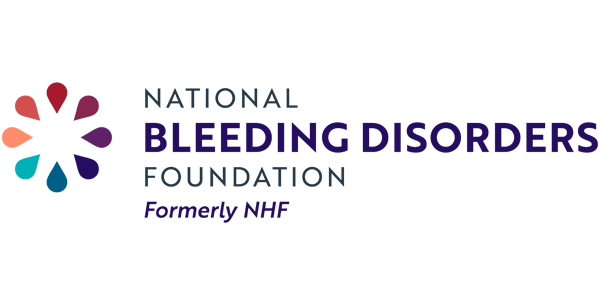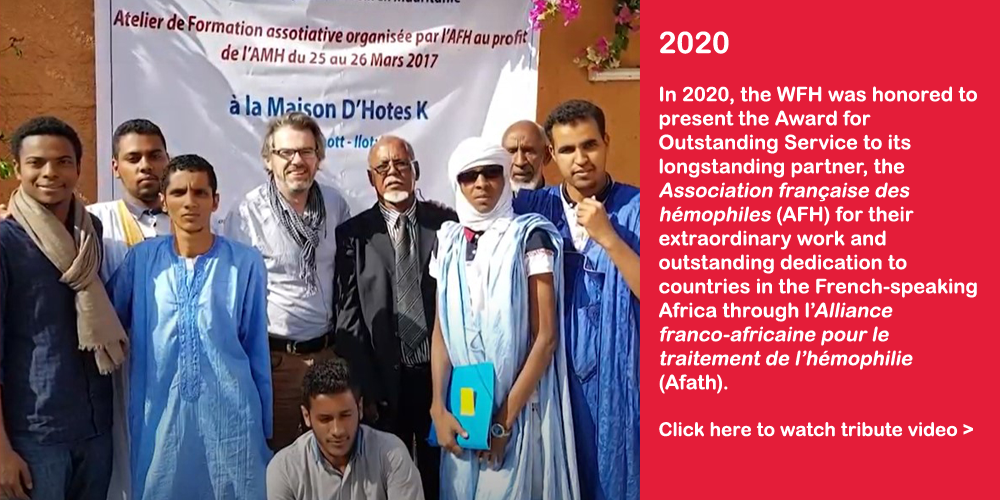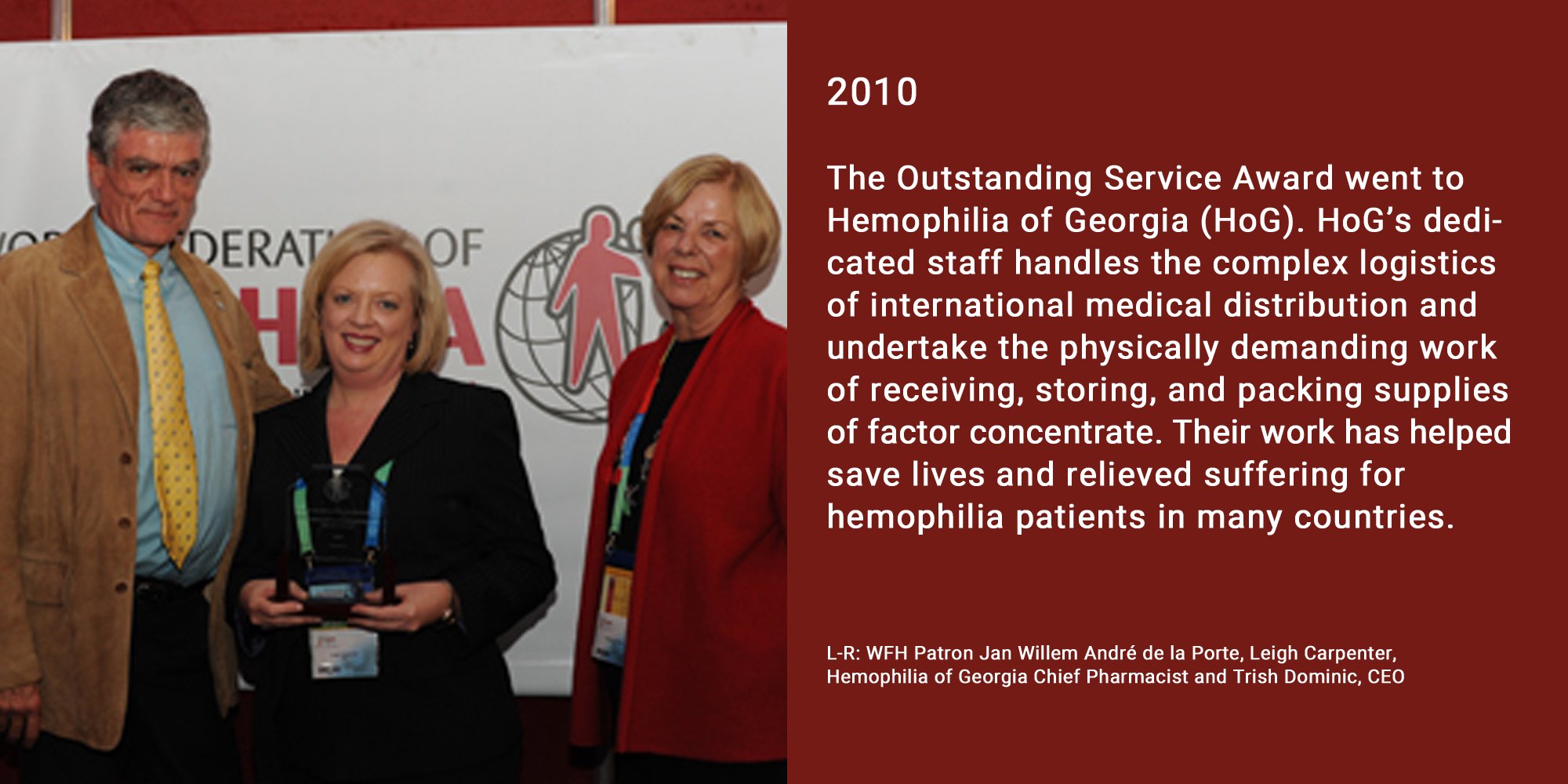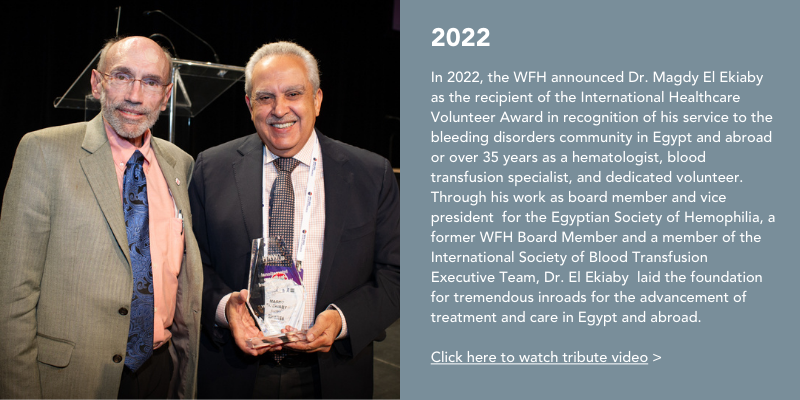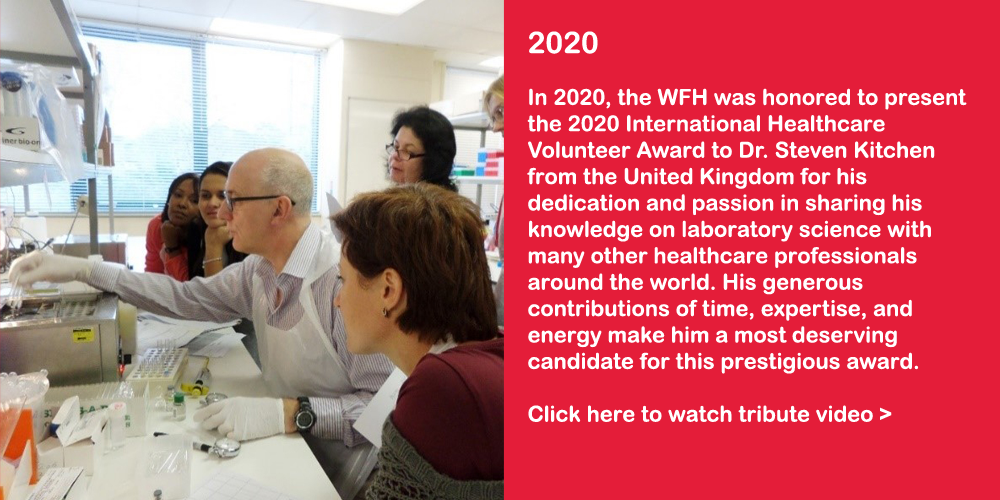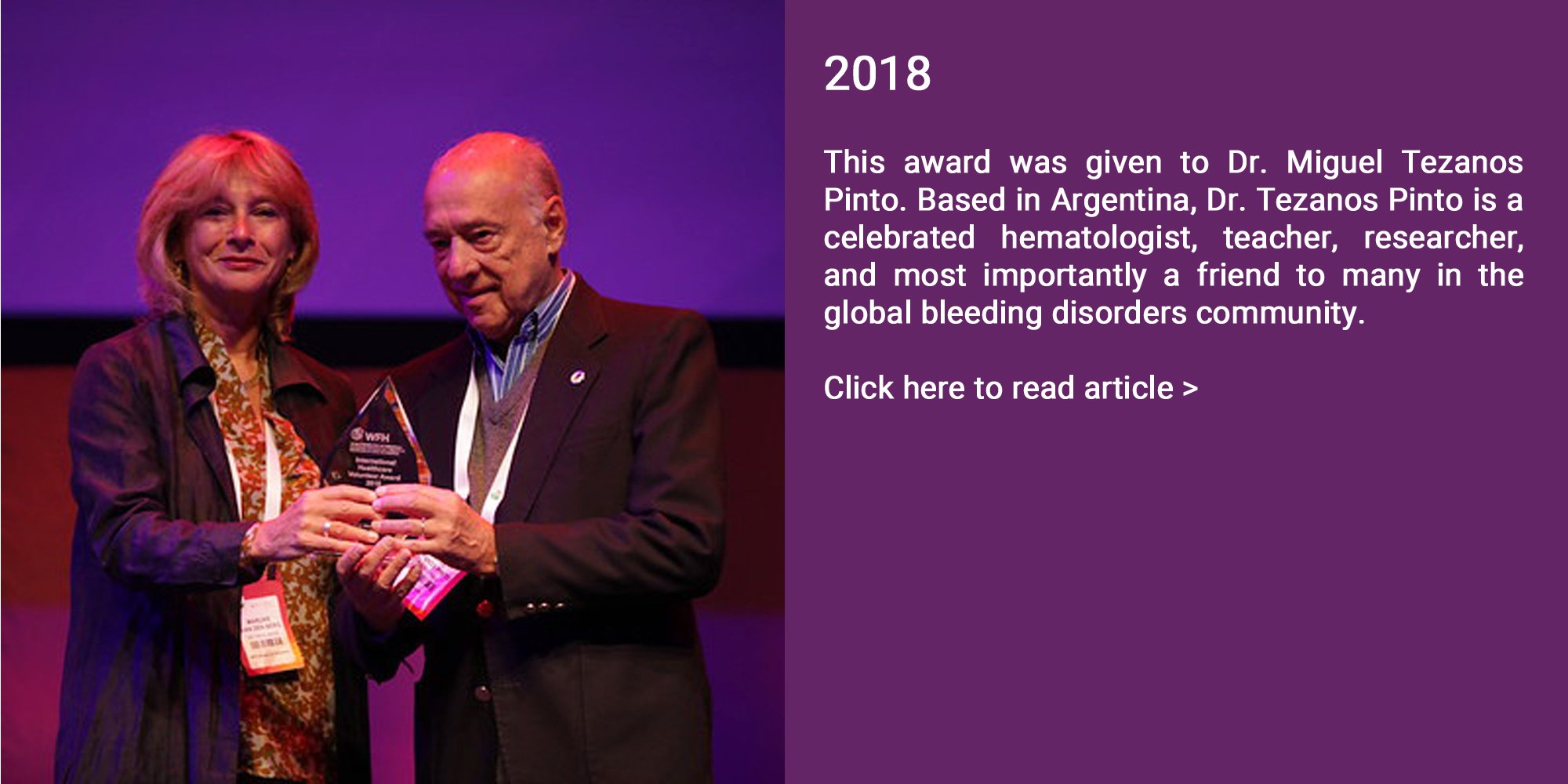Through the AGS, the WFH has been able to effectively track the increase in patient identification. From 1999 to 2021, there have been 429,232 people with bleeding disorders identified and reported (256,840 with hemophilia, 98,293 with von Willebrand disease (VWD) and 74,099 with other bleeding disorders). This represents a 286% increase since the start of this survey and an overall 9% increase from last year (6% increase in hemophilia, 12% increase in von Willebrand disease and 15% increase in other bleeding disorders). These increases can be attributed to return of patients to the clinics after the COVID-19 pandemic, developments in diagnostic capacity, and improvements in data collection processes and reporting.
As in the previous year’s report, the data are broken down into two sections: the first section includes historical global data that portray the growth in patient identification and reporting over time and the second shows the data for this specific year. In 2021, a total of 118 national member organizations (NMOs) contributed to the report. The report includes data from Republic of Congo—which celebrated its inaugural participation in the report—as well contributions from Luxembourg, Bahrain, and Croatia, all of which submitted data for the first time after many years. The WFH is thankful for the participation and support of all NMOs who have continuously supported our data collection efforts.
To access the WFH Annual Global Survey 2021, please click here. Supplementary charts and graphs are available online here to provide more information about bleeding disorders. For more information about the Annual Global Survey, please visit our web page here or contact [email protected].
